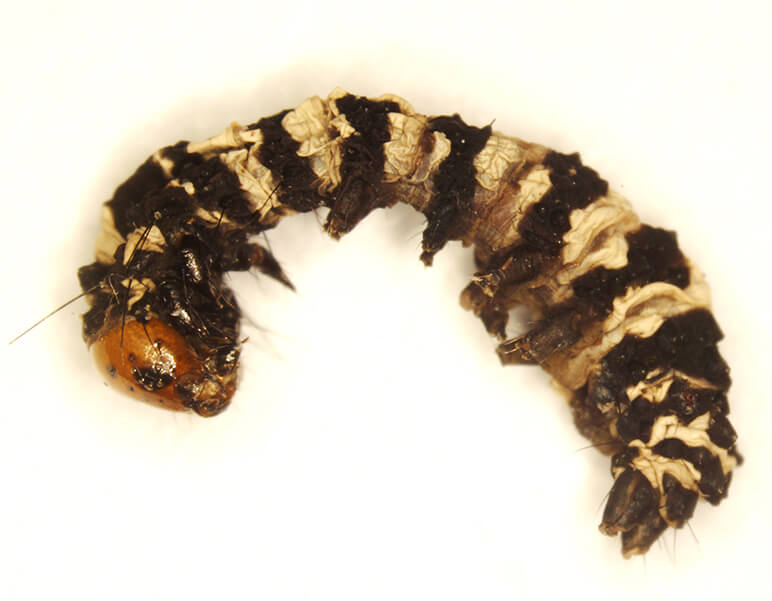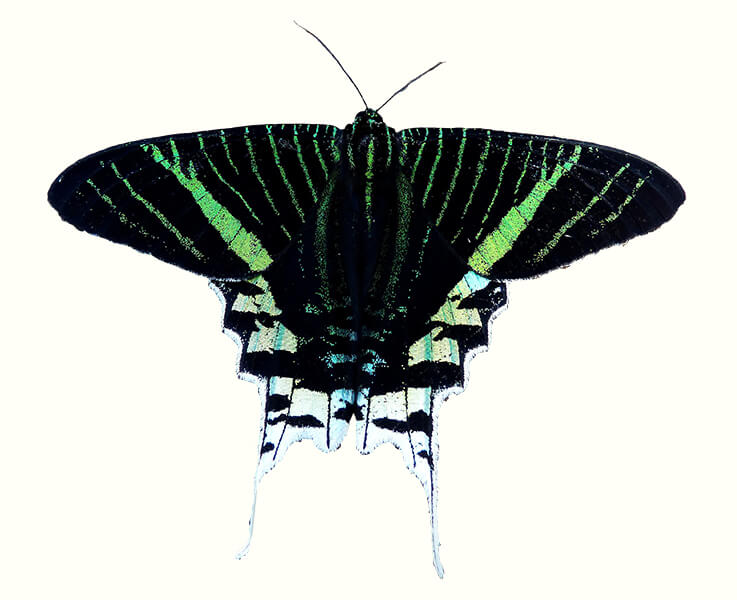Judge a caterpillar by what they eat, not where they’re found
Gut content analysis of Peruvian caterpillars reveals new insights into host-plant relationships and the methods used to examine species interactions key to BIOSCAN
The original primary rainforest surrounding Panguana station, Peru, Dept Huánuco, western Amazonia.
PHOTO CREDIT: K. Wothe
Understanding species and their associations with each other and with the environment – a key aspect of synecological research – is of great importance. For example, data on insect-host plant relationships can aid investigations into food webs and extrapolations of global species numbers as well as inform forestry, agriculture, and conservation practices.
Supported by the Bavarian Ministry of Science (‘SNSB-Innovativ’), our recent pilot study examined the gut contents of Peruvian caterpillars demonstrating the potential for gathering large-scale data on species interactions when applying DNA barcoding and high-throughput sequencing technologies. We obtained 130 caterpillars (moth larvae) by canopy fogging at the Panguana research station, an area of tropical primary forest in western Amazonia. DNA barcode analysis resulted in 119 successfully sequenced larvae, more than half of which matched with moth reference sequences on BOLD. Surprisingly high biodiversity was uncovered from our modest sample – 92 BINs or species proxies. The trees from which caterpillars were collected were also identified, both by morphology and DNA barcoding.
Panguana research station, Peru, Dept Huánuco, western Amazonia, with the characteristic Lupuna tree (Ceiba pentandra, Malvaceae) in the background.
PHOTO CREDIT: J. Diller
Knowing the tree and larva identity is not enough to conclude a host-plant relationship, particularly in a dense tropical rainforest. Caterpillars may in fact be feeding on the epiphytes, lianas, lichens, algae, fungi, or mosses associated with trees (i.e., alternative feeding), and sometimes larvae may have been fogged down from neighbouring trees. To confirm a direct insect-host plant relationship, we partnered with the company Advanced Identification Methods (AIM) to design a high-throughput sequencing (HTS) protocol with plant markers (rbcL, psbA) that would enable the identification of plant matter from the gut contents of ten larvae. Results revealed only two matches between the fogged tree and larval gut content which suggests a rather high percentage of alternative feeding. In three cases, the gut content clearly indicated feeding on lianas and neighbouring trees. Interestingly, the analysis of four larvae resulted in the putative presence of Bryophyta, suggesting moss-feeding in Lepidoptera, a phenomenon rarely observed. Potential contamination (for example, through the diffusion of plant DNA into the alcohol of the bulk sample) has yet to be ruled out, work which is currently being validated in a subsequent project investigating the gut contents of an additional 190 larvae.


Automeris denticulata (Conte, 1906) (Saturniidae): Larva (left), selected from canopy fogging bulk samples of a Poulsenia (Moraceae) tree at the Panguana station, identified by its COI barcode; Adult (right), collected at the Panguana station.
PHOTO CREDIT: Mei-Yu Chen & Dr. R. Mörtter
Our approach of combined canopy fogging, DNA-based identification, and gut content analysis resulted in two key findings. First, a significant portion of both insect and plant taxa can be identified even in highly diverse, tropical regions – more than 97% to a family level and about 80% to a species or genus level. Secondly, we can successfully confirm or reject the hypothesis that caterpillars feed on the trees where they are collected by identifying their diets through an HTS protocol on gut contents. Importantly, the taxonomic resolution of animal and plant identifications will increase with further investments into DNA reference libraries. We recommend specimen de-contamination (e.g. by bleaching) and/or isolated storage of the target taxa rather than bulk storage to improve the reliability of gut content analysis.


Urania leilus (Linnaeus, 1758) (Uraniidae): Larva (left), selected from canopy fogging bulk samples of an Oxandra polyantha (Annonaceae) tree at the Panguana station, identified by its COI barcode; Adult (right).
PHOTO CREDIT: Mei-Yu Chen & Dr. J. Diller
The techniques employed in our pilot have immense potential for unveiling trophic interactions in tropical regions at a very large scale as they are fast and cost-effective. The latter is enabled, in part, by the availability of target specimens in the by-catch of other studies. For example, our efforts fogging 150 trees in a separate project assessing the biodiversity of ants have resulted in 1,200 lepidopteran larvae. Subsequent aspects of the workflow, from selecting the larvae from bulk samples, tissue sampling, photography, and databasing, required 10–20 minutes per larva and can be performed with relatively low expertise. The costs for subsequent lab work, i.e. identification of larvae and their gut contents, currently amount to 20–25 € per larva and these costs will soon drop considerably. In contrast, traditional approaches involving the searching and rearing of larvae, and the identification of hatched adults by experts is massively time and resource consuming.
Providing reliable data on trophic interactions is one of the major goals of the BIOSCAN program, one that will be a powerful tool for investigating food webs, for determining the amplitude of alternative or multiple feeding sources, and for the study of phagism (monophagy versus polyphagy), thus gaining data for extrapolations of global species numbers. These data will also be particularly important for pest management in forestry, and agriculture, and for conservation purposes.
Overcoming the current lack of knowledge is a major challenge, particularly in ecoregions with megadiverse faunas and floras. Yet, its success is imperative for humanity considering the unprecedented biodiversity losses we currently face. In this context, the recently launched BIOSCAN with its focus on revealing species interactions will embolden an important plan for the international research community to come together in understanding nature and conserving it for a sustainable future.
Read the complete manuscript in PLoS ONE.
Written by

Axel Hausmann

Juliane Diller

Amelie Höcherl
SNSB – Staatliche Naturwissenschaftliche Sammlungen Bayerns - Zoologische Staatssammlung München, Munich, Germany
https://doi.org/10.21083/ibol.v10i1.6133 previous article
Don't Miss Out!
Subscribe to the iBOL Barcode Bulletin for updates on DNA barcoding efforts, the iBOL Consortium, and more.
Related articles
HOW A TROPICAL COUNTRY CAN DNA BARCODE ITSELF
BIOSCAN: ILLUMINATING BIODIVERSITY AND SUPPORTING SUSTAINABILITY
DNA BARCODING AND GENOMICS IN THE MEGADIVERSE AMAZON ALTITUDE FIELDS
comment on this article
The Barcode Bulletin moderates comments to promote an informed and courteous conversation. Abusive, profane, self-promotional, or incoherent comments will be rejected.





0 Comments